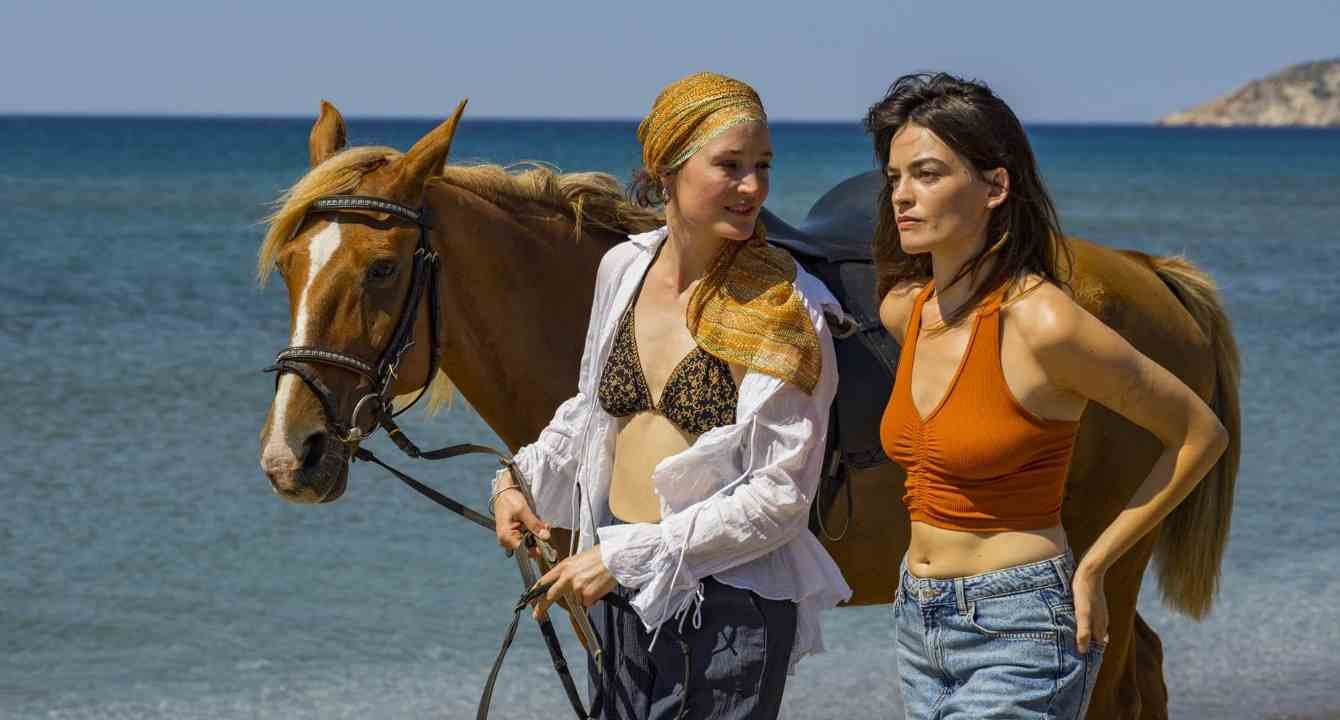Rebecca Lenkiewicz wrote and directed the 2025 drama film HOT MILK, which is based on Deborah Levy‘s 2016 novel of the same name.
The story takes place in the hot coastal town of Almería, Spain, and Sofia, played by Emma Mackey, goes with her sick mother Ingrid, played by Vicky Krieps, to a mysterious clinic to try to find a cure for her illness. As they make their way through the strange land, Sofia goes through a strange and emotional awakening and learns truths that are far from her mother’s control.
The film also stars Fiona Shaw as Rose and Vincent Perez as the enigmatic Dr. Gomez. Hot Milk premiered at the 75th Berlin International Film Festival on February 14, 2025. It is scheduled for theatrical release in the United States on June 27, 2025 by Independent Film Company and in the United Kingdom on July 4, 2025 via Mubi.
Though the novel and film are both set in southern Spain, particularly in Almería, the production took a different route when it came to filming.
WHERE AND WHEN WAS HOT MILK FILMED?
Hot Milk production began July 2023 and ended August 11, 2023. Over 27 days, the filmmakers captured the intense summer heat. Filming during the hottest months of the year was risky due to extreme weather conditions, including 45 °C temperatures and wildfires.
Giorgos Karnavas, the producer, told them not to film in those conditions, but they did anyway. They used the oppressive heat to show how the novel’s themes of tension, emotional instability, and freedom are reflected in real life. The Mediterranean light and dry landscape of Greece closely resemble that of Spain’s southern coast, making it an ideal alternative.
KEY FILMING LOCATIONS IN GREECE
Although Hot Milk is set in Spain, its filming was spread across five main Greek locations:
- Marathonas (Marathon) – The bulk of filming took place in Marathon, located northeast of Athens. The town’s rural coastal environment matched the arid, sun-bleached atmosphere of Almería. The crew shot for about 25 days here, capturing the sea, coastal cliffs, and Mediterranean vegetation central to the story’s visual palette.
2. Lavrio – Known for its industrial harbor and scenic coastline, Lavrio provided backdrops for scenes that required a slightly more urban or rugged setting. Its proximity to Athens made it logistically viable and visually convincing as a stand-in for Spanish port towns.
3. Nea Makri – This seaside town contributed to scenes where water and the beach play key roles in Sofia’s transformation and inner turmoil. Nea Makri’s beaches and local architecture helped sell the illusion of the Spanish coast.
4. Piraeus – Greece’s largest port city offered a different texture, used sparingly to depict scenes requiring more developed or populated settings. Piraeus helped fill in for locations in Almería that are more commercial or medically institutional, such as the clinic run by Dr. Gomez.
5. Central Athens – Just two days of shooting were conducted in Athens, mainly to shoot interiors and key transitional scenes. The versatility of Athens’ architecture allowed the production to match it closely with Spanish design elements.
WHY GREECE STOOD IN FOR SPAIN
Choosing Greece over Spain was likely driven by logistical and budgetary factors, but the resemblance between the two regions made the transition seamless on screen. The Mediterranean landscape, whitewashed buildings, and coastal light made Greek locations ideal substitutes. This allowed the filmmakers to visually stay true to the novel’s setting while managing the practical needs of the production.
Despite the physical challenges, the filming process in Greece enriched the project’s tone. The scorching heat, rugged coastal textures, and isolated rural areas captured in Marathonas and Lavrio added to the psychological and physical environment in which Sofia’s story unfolds.
OFFICIAL TRAILER
Stay tuned to netfilming.com for more updates, previews and behind-the-scenes.
Where Was Kill The Jockey (El Jockey) Filmed?



